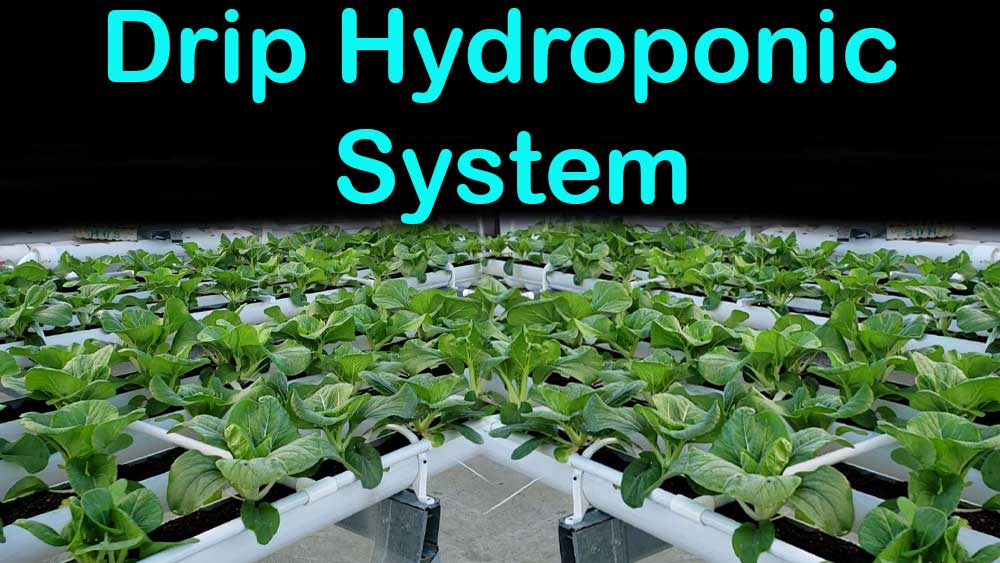Drip irrigation system
In this system, water pump uses to feed nutrients and water to the plant regularly. So, it is an active system. Also, this is known as micro irrigation system or trickle system. Here use small emitters to supply nutrient solution to the plant. From this system, nutrients and water provide directly to individual plants. This setup is using not only for hydroponic but also for outdoor gardens. Drip system initially introduced in Israel for outdoor plant cultivations. But it is equally worked in both growing media and soil. Drip irrigation improve water efficiency because it consumes less water amount.
Uses feeder lines network to deliver water to plants. So, this system is mostly suitable for large scale cultivations. Because of that, commercial growers use drip hydroponic system over other systems.
Individual pots are using to grow plants. Tubing network is there to connect drip lines to get water from reservoir to the plant. Regular water pump can use to apply pressure to water supply. Also, gravity force can also use for that. At least one emitter uses to individual plant. Each emitter has a water flow controlling mechanism. So, farmer can set different flow rates for different plants. There is a timer also to regulate water and nutrient flow. It helps to control the system. This system needs more attention in initial stage and after there is less maintenance. This can be made in automatic way.
Variations of the drip system
According to the way of treating the excess water, drip system can separate into two main variations. They are recirculating or recovery system and non-circulating or non-recovery system.
Recirculating system:
All water of the hydroponic media can’t absorb by plant roots. Excess water should send again to the reservoir in recirculating system. This system is more suitable for small scale cultivations. When waste water sends back to the reservoir, PH level of reservoir is affected. So, this system want maintenance in periodically. It is a drawback of this system. It is easy and cost effective in small systems.
Non-circulating system:
In this system, excess water removes as waste water. This method is not desirable. Non-circulating system is mostly used in large scale farms. They have better timers to control water flow and they are high automated. So, water runoff as wastage is minimum within this system. Reservoir water of this system requires less maintenance.
Steps of setting up a drip hydroponic system
There are some components want to setup a drip system. Drip emitters, PVC tubing, thin tubing, a tray, water pump, a large bucket, garden timer, small pots, aquarium grade silicone sealant, growing medium (coconut coir), power drill, PVC cutter or hacksaw to cut pipes are those components.
Basic setup of this system is simple. The pump is placed inside the reservoir. Emitters are connected to pump from PVC and spaghetti tubing. Individual emitters are connected to pots. Then pot is placed in the tray and provide facility to drain excess water to the reservoir. Finally attached the timer and set time duration according to the plant water requirement.
Lettuce, onions, tomatoes, radishes, strawberries, cucumbers like crops can grow using this system. Drip system is more suitable for large plants which requires more water. Slow graining medium like coconut coir can use for better results.
There are both advantages and disadvantaged of this system. When comparing with other systems, this system want less maintenance and it is flexible. This system can control water and nutrient supply. Farmer can afford this system and system failures are very less. But in small scale, this can be a complex system. There is a chance for waste in non-recovery system.
Ref:
